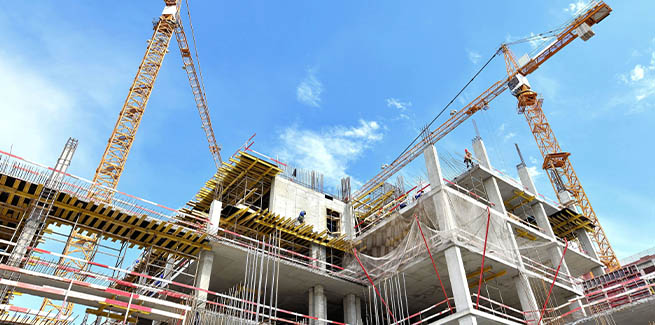According to the Australian Bureau of Statistics’ Building Approvals data for September, the number of dwellings approved rose 15.4 per cent in September (seasonally adjusted terms).
Furthermore, the data showed that there was a 9.7 per cent increase in approvals for private sector detached houses, while approvals for apartments and units jumped by 23.4 per cent from August. Approvals for new detached houses have risen 20.7 per cent compared with September 2019.
Commenting on the data, ABS director of construction statistics Daniel Rossi said: “The September results indicate continued demand for detached housing following the relaxation of COVID-19 restrictions in most states and territories.”
“A range of federal and state-based incentives are also providing support for the housing sector.”
Master Builders Australia CEO Denita Wawn agreed and attributed the rise in the number of building approvals for new homes to the federal government’s $688-million HomeBuilder scheme.
“Even prior to the start of the COVID-19 crisis, new home building activity in Australia had been in the advanced stages of downturn. The introduction of HomeBuilder has turned things around,” Ms Wawn said.
“The recovery in residential building will benefit the whole economy. Every $1 million in residential building activity supports nine jobs right around our economy. The upturn generated by HomeBuilder is helping claw back some of the jobs lost as a result of the pandemic.”
Ms Wawn believes extending the HomeBuilder grant until 2021 (it is currently available to owner-occupiers “substantially renovating” or building a new home from 4 June to 31 December 2020) would assist with “maximising the benefits” of the scheme.
“It will mean the renewed momentum in the housing market to reach its full potential over the course of next year and provide even more benefits to our whole economy in terms of restoring employment,” she said.
Across the states and territories, dwelling approvals rose in Western Australia (42.6 per cent), South Australia (28.3 per cent), Queensland (19.3 per cent), Tasmania (18.8 per cent), Victoria (12.4 per cent) and NSW (4.6 per cent).
Approvals for private sector houses rose in South Australia (19.9 per cent), Western Australia (15.1 per cent), Victoria (9.7 per cent), NSW (7.3 per cent) and Queensland (3.6 per cent).
Housing Industry Association chief economist Tim Reardon said that based on the strength of new home sales in September, he expects finance approvals and building approvals to continue to perform strongly next month, before the positive impact of the HomeBuilder scheme begins to fade.
“It is evident in today’s data that HomeBuilder has been successful in creating work on the ground in the December quarter. This will protect jobs in the construction industry and the wider economy,” he said.
“These high volumes of sales, loans and approvals following the announcement of HomeBuilder will be relatively short-lived. HomeBuilder was designed to provide consumers with confidence to return to the detached housing market. It has been very effective at achieving this goal.
“This new work entering the pipeline will offset the significant declines observed from March as restrictions were announced and will ensure a stable supply of new building projects over the next nine months. When balanced against the June quarter, the record volume of loans and approvals will not lead to a record number of new home commencements.”
On the other hand, the value of total building approval fell 17.0 per cent in September (seasonally adjusted terms).
The value of non-residential building fell 36.7 per cent, driven by the public sector, following a strong result in August.
The value of total residential building fell in September by 0.7 per cent, comprising a 1.0 per cent fall in new residential building, and a 1.1 per cent rise in alterations and additions.
Qld FHBs out in force
The ABS also released its Lending Indicators data for September, which found that the number of loan commitments for Queensland first home buyers (FHB) was the highest since June 2009.
The data also showed that new loan commitments to Queensland owner-occupier FHBs has risen by nearly 70 per cent compared with last year, rising from 1,760 in September 2019 to 2,986 in September 2020.
Queensland-based real estate agent Image Property sales director Adam Empringham said there has been strong demand from FHBs, particularly in southern Queensland.
“We have had about 30 tenants indicate to us that they wouldn’t be renewing their leases in the past few months because they intend to buy their first home instead,” he said.
“This is far more than what is usually recorded and is a strong indicator of the desire of prospective home buyers to become property owners themselves.”
Mr Empringham observed that rental markets across the southeast was struggling with more demand than supply in many locations, with rents rising as a result.
“When rents start to increase, it is usually the start of a market growth cycle as more renters becomes property owners,” he said.
“As well as this market fundamental, this time around we have a number of government grants and concessions for first-time buyers, which is bringing forward their property ownership plans.
“All in all, market conditions across the southeast are strong, with signs of more positivity to come when borders reopen to a predicted surge of interstate migrants early next year.”
According to ABS data, across Australia, the number of owner-occupier FHB loan commitments rose 6.0 per cent (seasonally adjusted terms).
Owner-occupier FHB loan commitments accounted for 34.5 per cent of all owner-occupier commitments (excluding refinancing) in original terms.
Meanwhile, the number of FHB loan commitments for investment purposes accounted for 4.4 per cent of all FHB commitments, in original terms.
[Related: Building activity continues to shrink]
 ;
;
